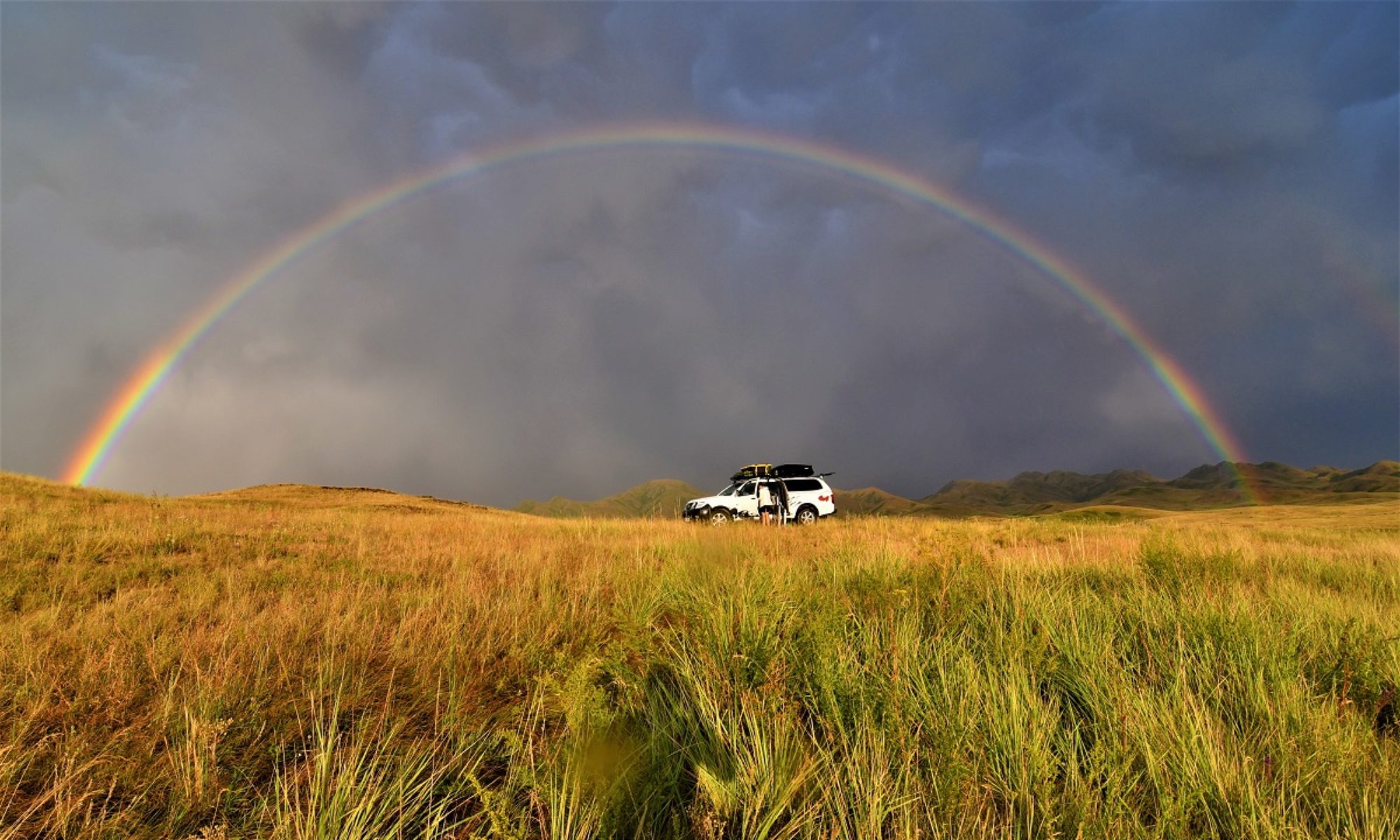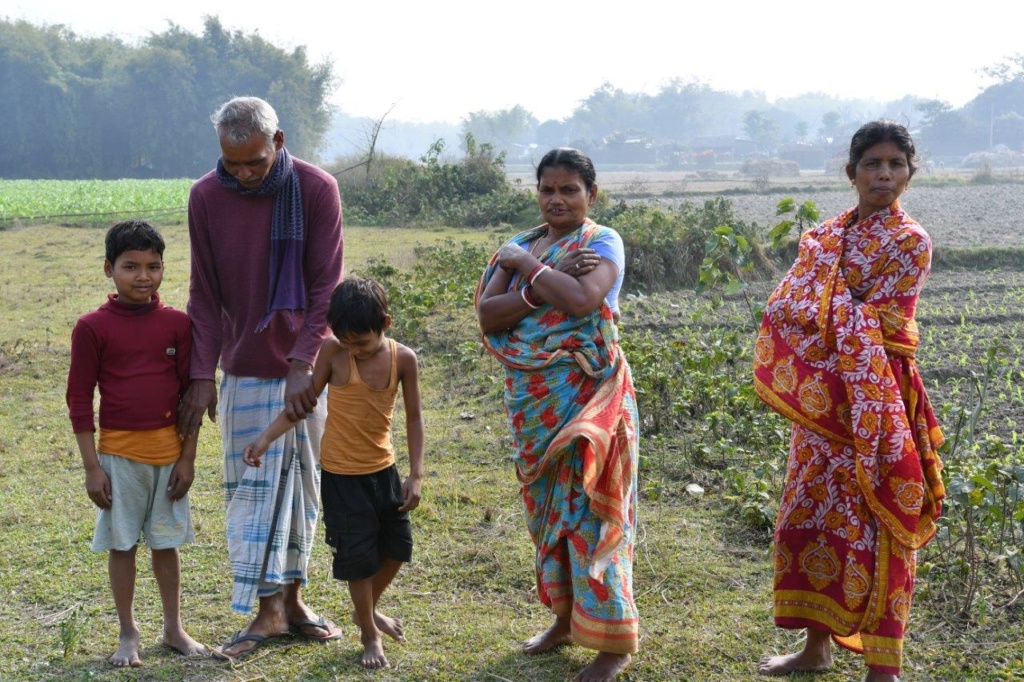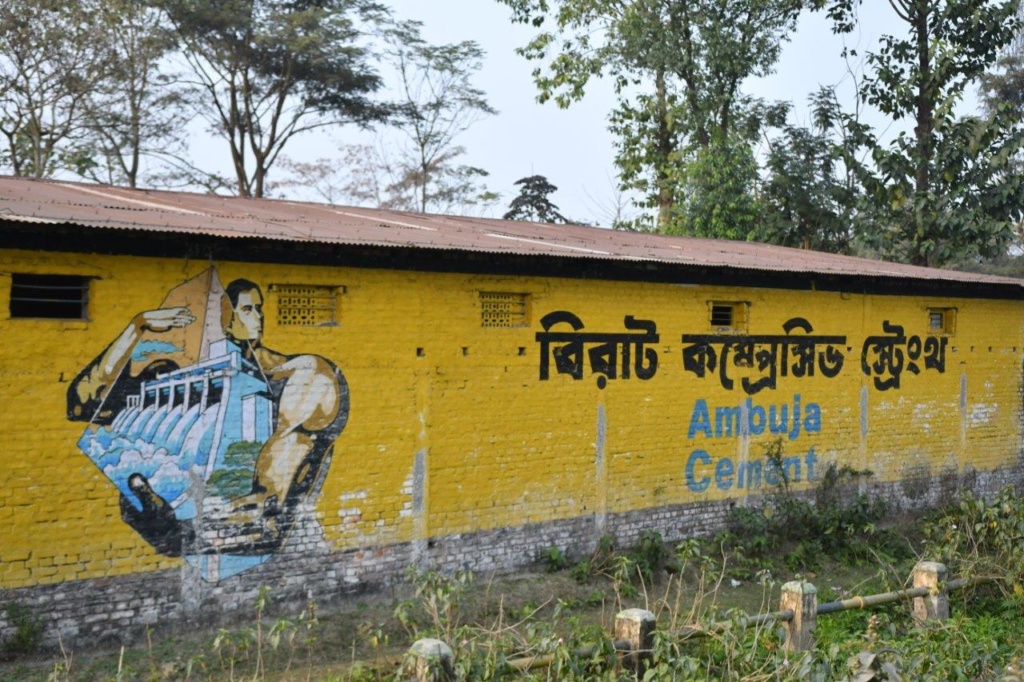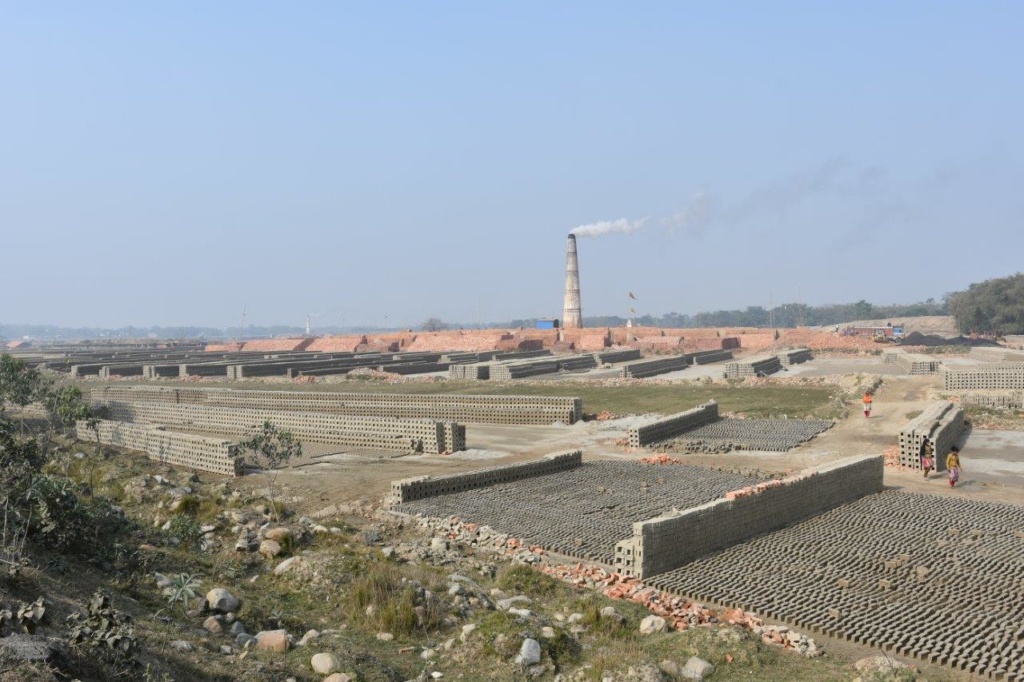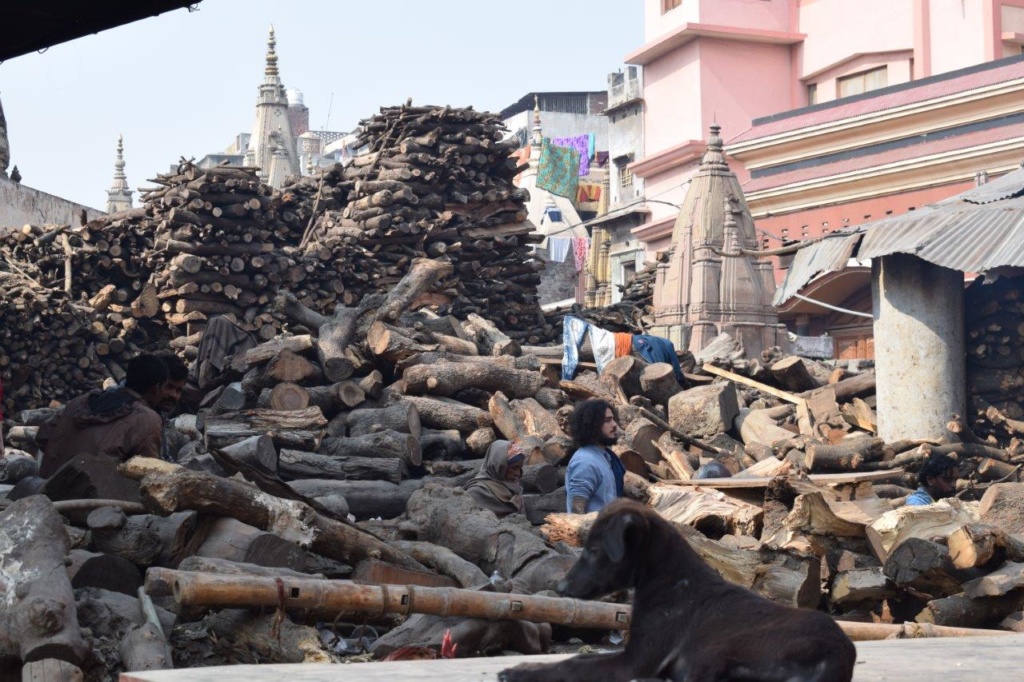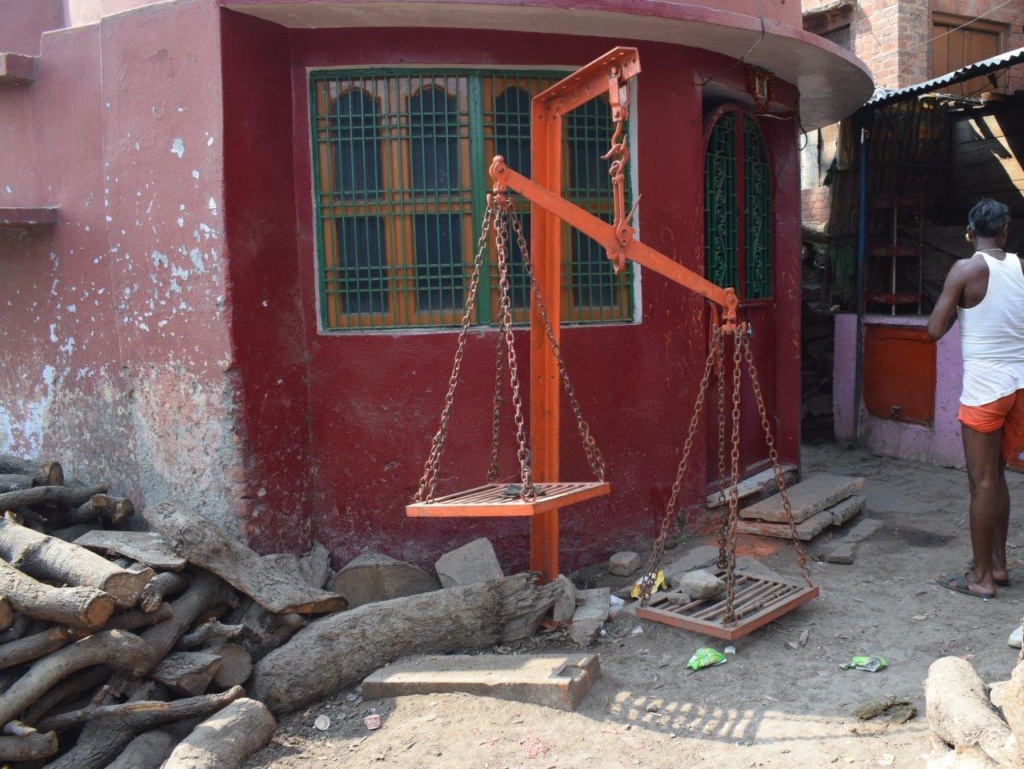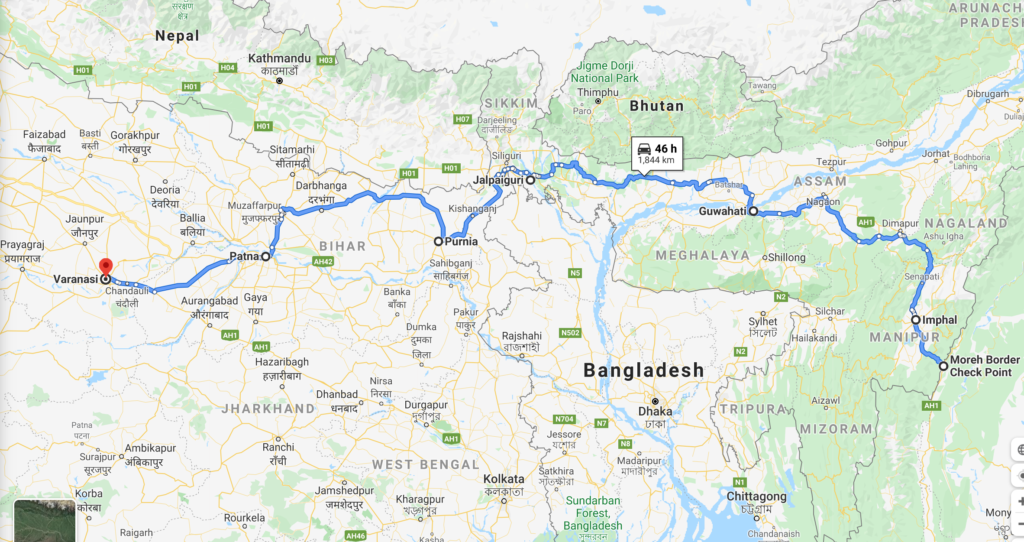
Sunday 19th January, 2020 – Moreh – Imphal
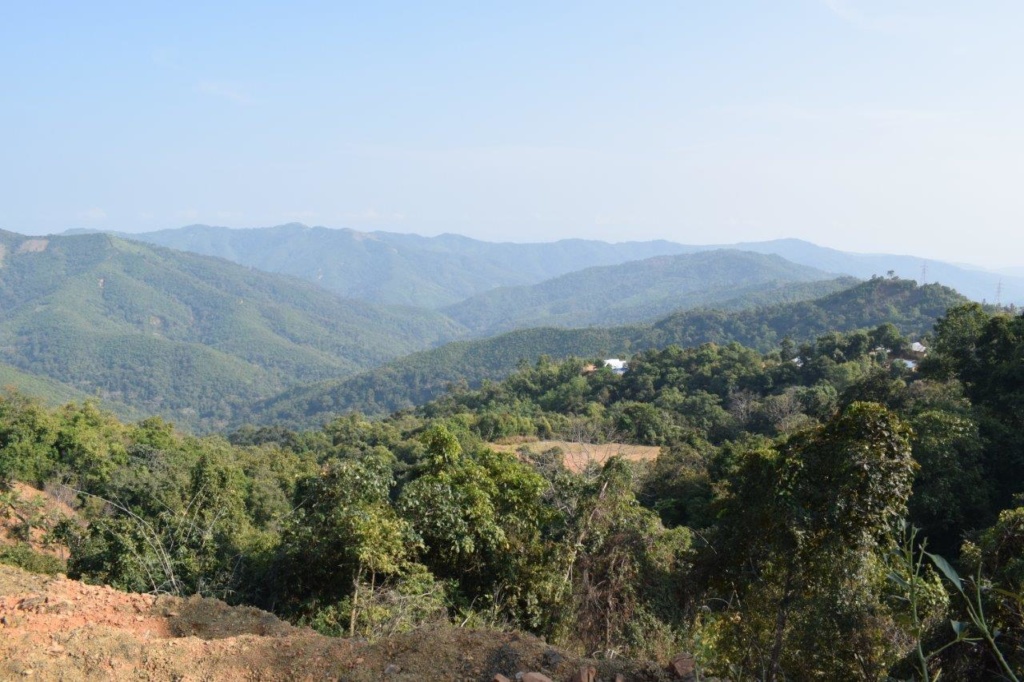
The formalities at the Indian border were a bit slow (everything entered manually in ledgers) but soon enough we were on our way. The road was not great and there were a number of police/military checkpoints on the way where our details were once again entered in ledgers. Ethnic tension in north-east India still flares up now and again and the region is not far from Bangladesh, Bhutan and China so the military presence on the ground is heavy.
Imphal is the first major town after the border. It is not far: 110km but it is a mountainous region and the roads are bad so it took us 3h30. It also gets dark earlier because of the time difference between India and Myanmar so we only just made it before sunset.( around 4.30pm)
Monday 20th January, 2020 – Dimapur
Quite chilly this morning and foggy, a shame as the scenery could have been great.(people (men and women) are wearing woolen shawls. The roads in this region are quite bad and there are lots of lorries on narrow roads so difficult to go anywhere fast… Army presence still heavy , soldiers with guns at checkpoints but also in towns and we passed lots of army barracks. Finally got to Dimapur after 7 hours on the road and only 200km done !
Tuesday 21st January, 2020 – Guwahati
The road improved half way to Guwahati and turned into a dual carriageway but this brings another problem: traffic going the wrong way, from motobikes to heavy lorries! This happens especially near villages or towns . The road has a central reservation so you cannot directly cross over to the other side. Rather than going to the next opening where you can make a u-turn and access the other side of the road, people simply drive in contraflow until they reach the shop or the side road they need….regardless of the oncoming traffic!
Wednesday 22nd January, 2020 – Jalpaiguri
Slowly making our way. Looking for a hotel in Jalpaiguri, whilst reversing on a small road, the car suddendly tilted to one side: one of the back wheels had fallen into a sink hole! The road had collapsed under the weight of the car and now we were stuck! We could not move out of the hole, half the wheel was burried. The road was pretty deserted and it was already dark but a tuk-tuk driver was there and he took Paul to the local police station to get some help. In the mean time a few people had stopped to have a look. Some young guys spoke english and tried to help but without success. Finally after a while Paul returned with a policeman and a” mechanic”. After lifting the car with the jack and pushing some old bricks and rubble under the wheel to give traction, Paul managed to reverse the car out of the hole. The tyre, brand new, (we bought a new set of tyres before leaving Thailand) was damaged on the side and would probably be no good! We were not happy !
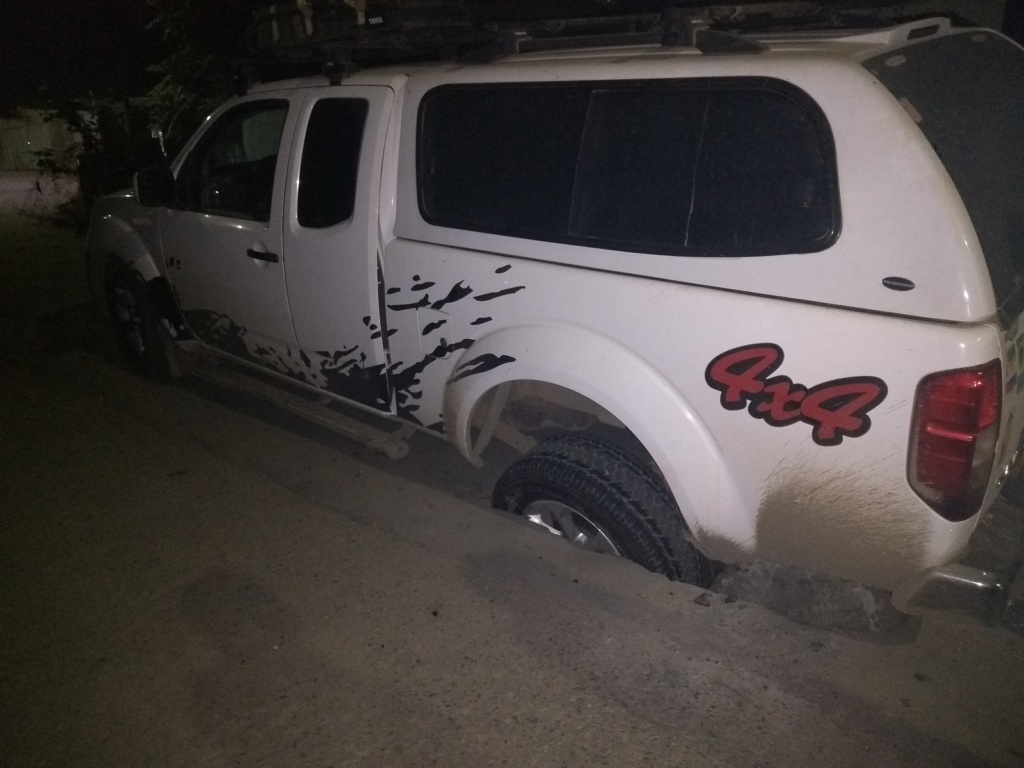
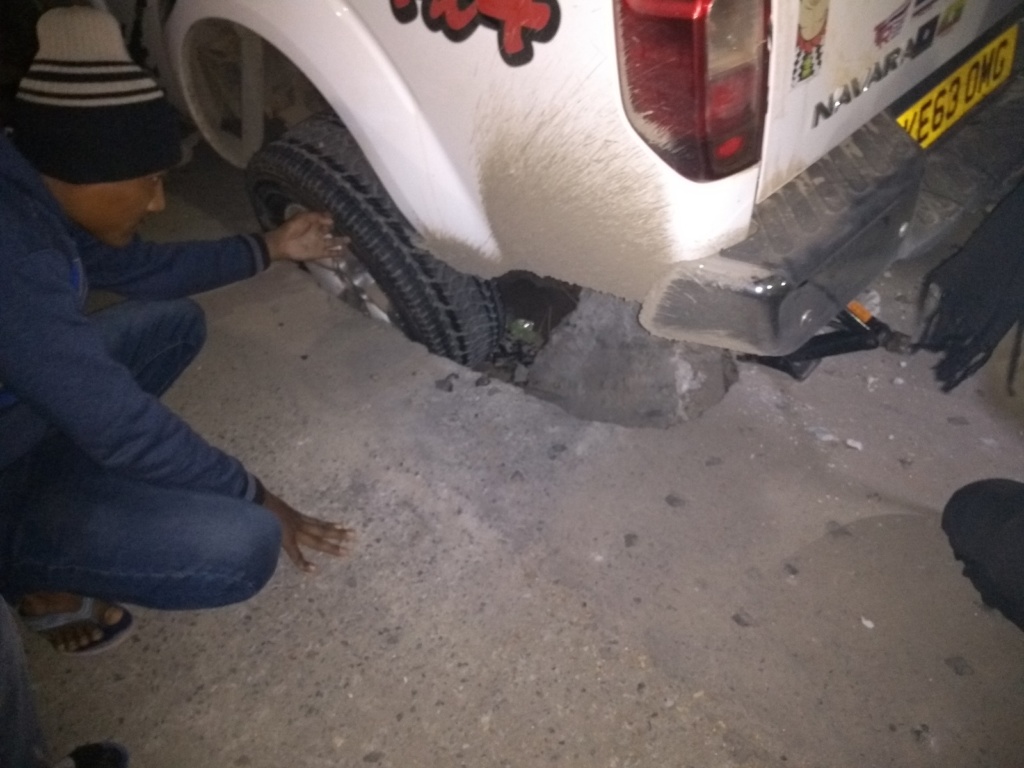
One of the young guys guided us to the hotel. There, a wedding was going on and we got invited to the party. It was a traditional Bengali wedding and we saw some of the rituals ( most are similar to Hindu weddings). We were also given food, a succession of 10 dishes served by an array of waiters ready to replenish your plate as soon as it was empty. Two of the guests spoke good english and we were invited to join them the next day to go and rest at a resort ( countryside hotel with private chalets) owned by a relative. We initially accepted but as they were not due to leave until 3pm and it was one hour away, it would be dark by the time we got there and we would have to wait around for most of the day. We do not have much time in India so in the end we gave our apologies and left.
Thursday 23rd January, 2020 – Purnia
Again, foggy this morning and chilly, we are in the foothills of the Himalayas after all and close to the Nepalese border !We went through a lot of small settlements where you fight your way on the road with people on bicycle, motorbikes, pedestrians, cows, goats, dogs, tuk-tuks , buses , lorries… the list can go on. We also saw tea plantations (darjeeling), fields of what appeared to be colza ( yellow flowers) and lots of cauliflowers.
Friday 24th January, 2020 – Patna
Mostly “highways” today, which means toll roads ( but cheap for us, highest toll paid :£1.20).It is called highway but it does not stop having lots of intersections with side roads where you have a succession of bumps or movable gates placed halway across the road to force you to slow down. ( like a slalom !) These intersections are also frequently bus stops with market and food stalls, people crossing the roads etc… You have to be on constant alert.
For lunch we took a turning off the main road, going to a village and stopped at the entrance of a field. it was no long before we had visitors: local people, curious to see who had set foot on their land. Men especially are curious about the car ( left hand-drive) and about the roof box ( the shape make them think it is a boat), lots of people also ask for selfies. People are not afraid to put their head right through the window to have a good look inside ( even when you are seating in the car! A family stood a few feet away the whole time we were having lunch. It is something we are slowly getting used to. It is difficult to be left alone, even when you think you are on a deserted road, people will suddenly appear out of nowhere.
We have come across a lot of advertisements, either as billboards or painted directly on houses for cement and to a lesser extent for plywood too. Most are promoting the strength and no cracks properties of their particular brand in surprising ways, using images of a couple …. cement has never been so attractive!
We have also passed plenty of kilns churning out bricks. The construction industry is booming…
Saturday 25th January, 2020 – Varanasi ( formerly Benares)
Some of the sights on the way, the road is always full of surprises:
Arrived in Varanasi mid-afternoon, giving us time to go to the old town. Varanasi (Benares) is one of the oldest continually inhabited cities in the world (dating from 1200 BC) and one of the holiest in Hinduism. People come here to wash away sins in the sacred waters of the Ganges, cremate their loved ones or simply to die, hoping for liberation from the cycle of rebirth.
There are about 80 ghats along the river ( steps leading down to the water), most are used for bathing but a number are ” burning ghats” where bodies are cremated in public. Pilgrims come at dawn to perform puja ( prayers) to the rising sun and everyday there are ganga aarti ceremonies ( river worship ceremony) held in two of the main ghats at sunset. We went to the Dashashwamedh ghat to watch the aarti. It is an elaborate ceremony with puja, fire and dance.
Sunday 26th January, 2020 – Varanasi
We went to the Manikarnika Ghat. This is the main burning ghat. Dead bodies are carried to the Ganges through the old town on bamboo stretchers, swathed in cloth. At the bottom of the steps they are doused in the holy water prior to cremation. Huge stacks of wood are stored along the top of the ghat and every log is weighed on a scale to calculate the cost of the cremation. The price depends on the type of wood used, sandalwood being the most expensive.
We then walked along the bank of the river going through some of the ghats where you see people coming to the Ganges not only for a ritual bath but also to wash clothes, get washed, make offerings, offer blessings, relax and socialise… the river is an integral part of daily life.
Today is Republic Day so lots of places decorated with the Indian flag and some people celebrating.
Sights in the old town:
The owner of the hotel where we stayed let us park the truck at his house down the road and even offered to have it washed for us. There, we met one of his uncles who had just arrived from Canada and had a nice chat.
